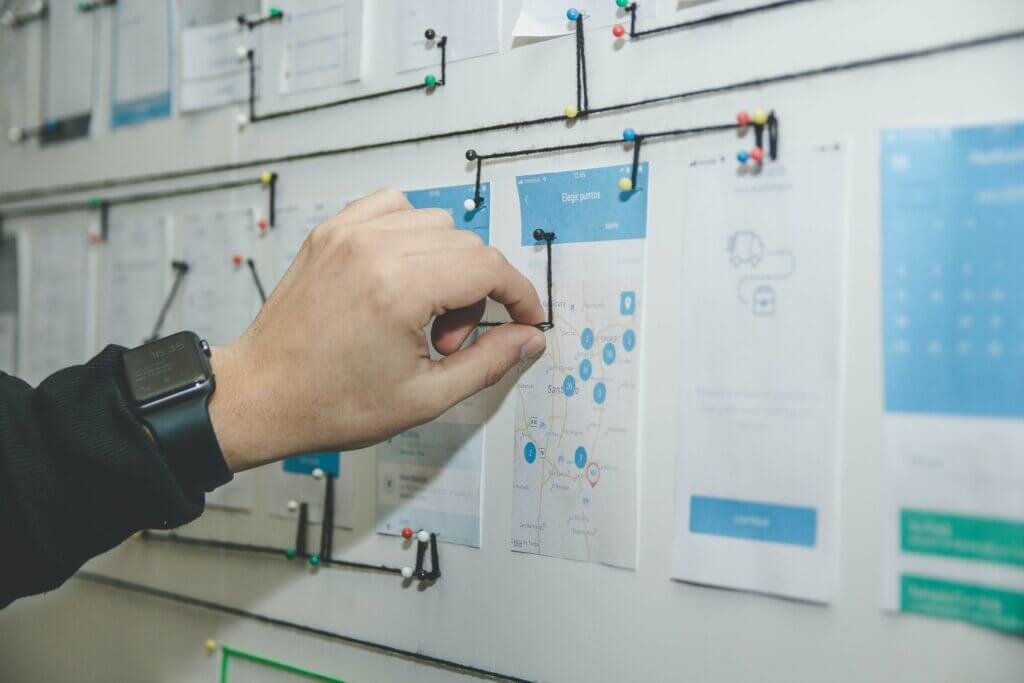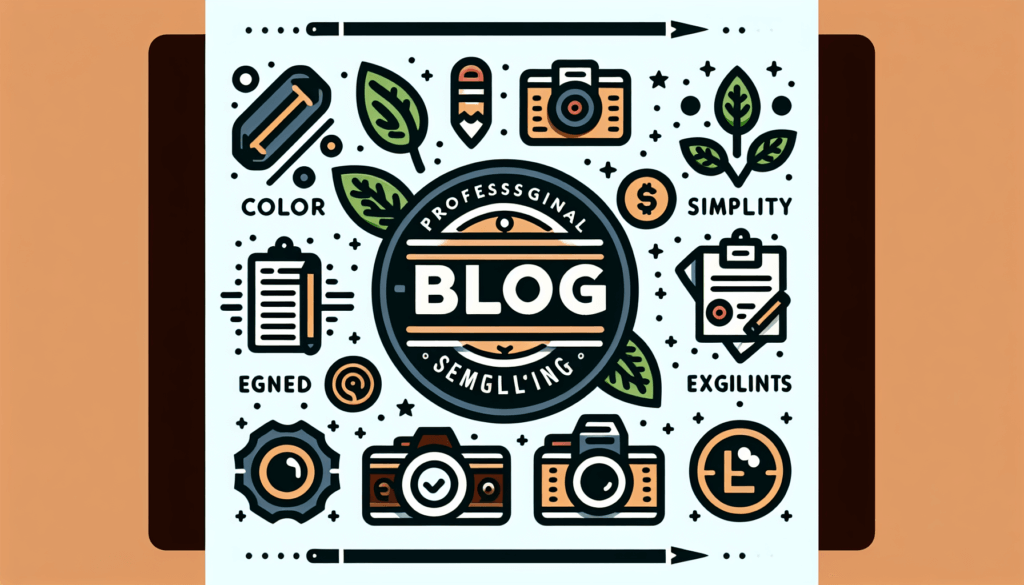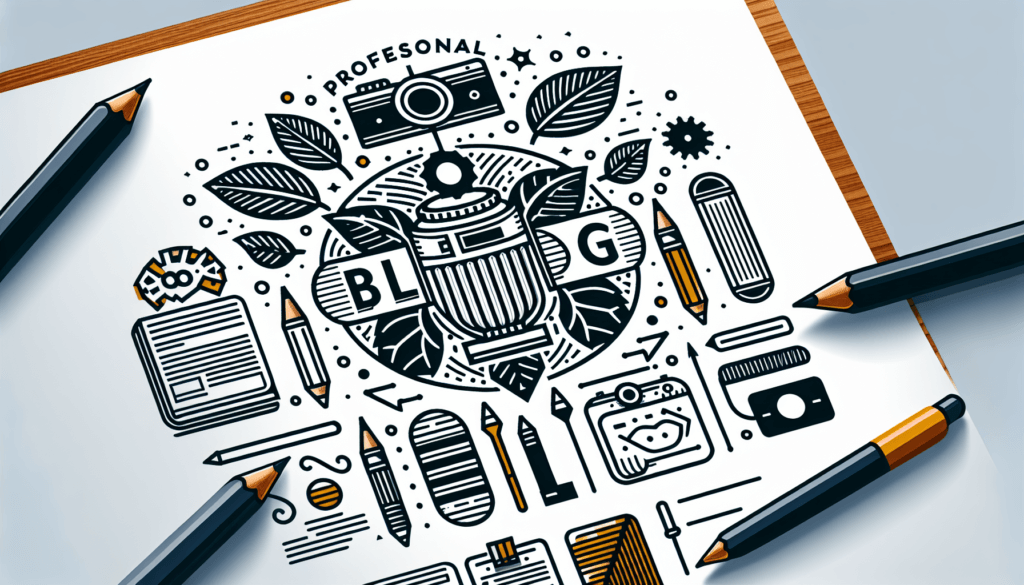Are you looking to create a professional and eye-catching logo for your blog? Look no further, as this article will guide you through the steps of designing a logo that will captivate your audience and leave a lasting impression. Whether you’re a seasoned blogger or just starting out, having a well-designed logo can help establish your brand and set you apart from the competition. In this article, you will discover valuable tips and tricks to create a professional blog logo that truly represents your unique style and identity.

Choose a Concept for Your Logo
When designing a logo for your blog, it’s important to start by brainstorming ideas. Think about the theme and niche of your blog and consider different concepts that reflect its essence. Jot down keywords and phrases that come to mind, and let your creativity flow.
To get inspiration, it’s a great idea to research other blogs in your niche. Look at the logos they use and consider what elements you like or dislike. This will help you understand the trends within your industry and find ways to make your logo stand out.
Identifying your target audience is crucial in logo design. Consider who your blog is aimed towards and what would appeal to them. For example, if your blog is about parenting, you might want to incorporate symbols related to children or family. Knowing your audience will help you design a logo that resonates with them.
Consider Your Blog’s Branding
Before delving into the logo design process, it’s essential to define your blog’s mission and values. What do you want to accomplish with your blog? What are the core values that you want it to reflect? This will help guide your logo design and ensure it aligns with your overall brand.
In addition to mission and values, determining the tone and style of your blog is crucial. Is it serious and informative? Fun and lighthearted? Professional and elegant? Consider the emotions and vibes you want your blog to evoke, as this will influence the design choices for your logo.
Selecting a color palette is another important aspect of branding. Colors have a profound impact on people’s perceptions and can convey different meanings. Choose colors that complement your blog’s mission, values, and tone. Consider using color psychology to evoke the desired emotions in your audience.
Decide on the Logo Type
There are different logo types to choose from, each with its own strengths and characteristics. The wordmark logo focuses on typography and uses the name of the blog as the main visual element. This type of logo works well for blogs with memorable names or unique fonts.
The lettermark logo, on the other hand, uses initials or a single letter to represent the blog. This is a great option if your blog has a long name or if you want a more minimalistic and sleek design.
An iconic logo relies on a graphic symbol or emblem to represent the blog. This type of logo is effective in creating a memorable brand identity. Think of iconic logos like the Nike swoosh or Apple’s apple symbol.
A combination logo is a fusion of typography and an icon. This is a versatile choice that allows you to have a recognizable symbol along with the name of your blog. It gives you more flexibility in terms of branding and recognition.
Consider the nature of your blog and its target audience when deciding on the logo type. Each type has its strengths and will communicate different messages to your readers.
Select the Right Typography
Typography plays a crucial role in logo design. It sets the tone and style of your logo and can convey different emotions and messages. Choose a font style that reflects the personality and values of your blog.
Consider the readability and legibility of the font you choose. It’s important that your logo is easily readable across different sizes and formats. Avoid overly decorative fonts that may be difficult to decipher, especially in smaller sizes.
Experiment with different variations of your chosen font. Play with the weight, spacing, and effects to create a unique typographic logo. This will add a personalized touch to your logo and make it stand out from the crowd.

Create a Unique Symbol or Icon
A symbol or icon can add a visual element to your logo and make it more memorable. Start by sketching out initial ideas on paper. Let your imagination run wild and explore different concepts. Once you have a basic idea, you can move on to using a logo creator tool to refine and stylize your symbol or icon.
If you’re looking for a more professional touch, consider hiring a graphic designer to create a unique symbol or icon for your logo. They have the expertise and creativity to bring your vision to life while ensuring a high-quality result.
Remember that the symbol or icon you choose should align with your blog’s branding and resonate with your target audience. It should be easily recognizable and memorable.
Design the Logo Layout
The layout of your logo is crucial for its visual impact. Choose the position of the elements carefully to create a balanced and visually pleasing composition. Consider different layouts such as horizontal, vertical, or diagonal, and see which best suits your blog’s name and icon.
Hierarchy plays an important role in logo design. The most important element should stand out and grab attention. Experiment with different sizes and placements to achieve the desired hierarchy in your logo.
Ensure that your logo is scalable and versatile. It should look good across different sizes and formats, from small website icons to large banners. Test the logo in different contexts to make sure it remains clear and legible.

Experiment with Different Shapes
Shapes can add visual interest and convey different messages in logo design. Explore geometric shapes for a modern and clean look. Use squares, circles, triangles, or polygons to create a harmonious composition.
Consider organic shapes for a more natural and free-flowing design. Waves, curves, or irregular shapes can add a sense of movement and creativity to your logo.
Don’t be afraid to combine different shapes for unique effects. Experiment with overlapping or nested shapes to create interesting compositions that stand out.
Use Color Effectively
Color is a powerful tool in logo design that can evoke emotions and create brand recognition. Understand color psychology and what different colors symbolize. Choose a primary color that reflects your blog’s personality and values.
Consider using secondary and accent colors to add depth to your logo. These colors can complement the primary color and create a visually appealing composition. However, be mindful not to use too many colors, as it can make the logo look cluttered and confusing.

Optimize for Different Platforms
Your logo should be optimized for different platforms to maintain its readability and impact. Ensure that it looks good and remains clear at different sizes. Test it on various backgrounds to see if the colors and elements stand out or blend too much.
For smaller formats such as social media profile pictures or favicon, create a simplified version of your logo. This should still capture the essence of your brand but in a more compact and easily recognizable format.
Add Finishing Touches
To refine your logo, go through several iterations. Experiment with different variations and fine-tune the elements until you’re satisfied with the result. Consider adding subtle details like shadows or gradients to enhance the visual appeal.
Make sure the logo aligns with your blog’s branding and style. It should be cohesive with the overall aesthetics and messaging of your blog.
Designing a professional blog logo requires careful consideration of various factors. By brainstorming ideas, defining your blog’s mission and values, selecting the right type, typography, and symbols, designing an effective layout and experimenting with shapes and colors, optimizing for different platforms, and adding finishing touches, you can create a logo that truly reflects the essence of your blog and resonates with your target audience. So, unleash your creativity and get started on designing a professional blog logo that will set your brand apart and make a lasting impression on your readers.



